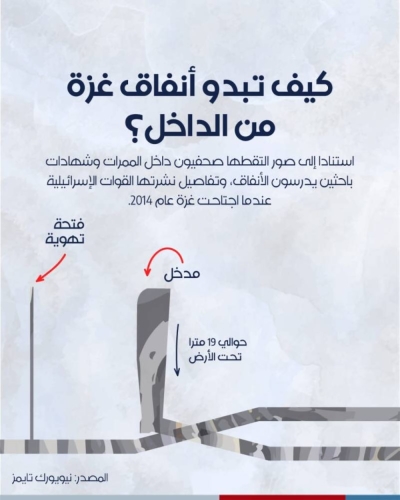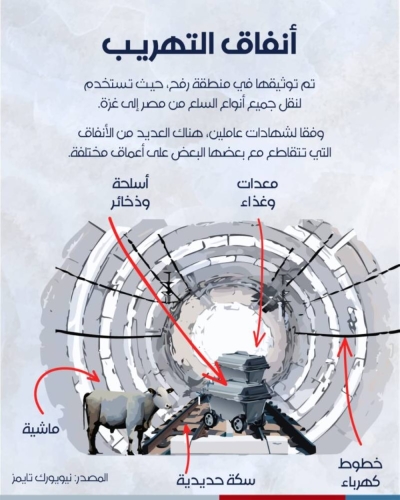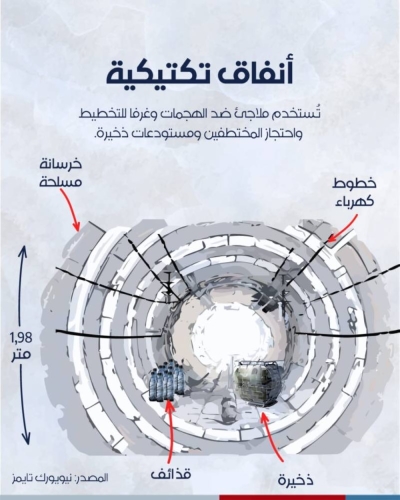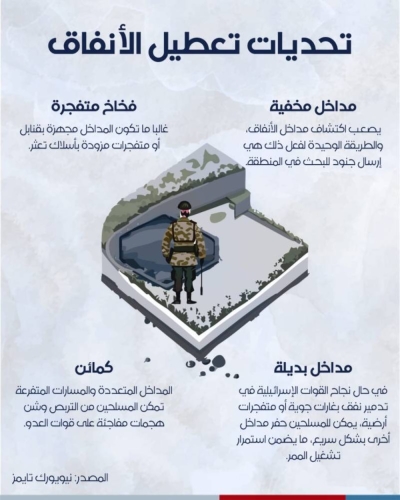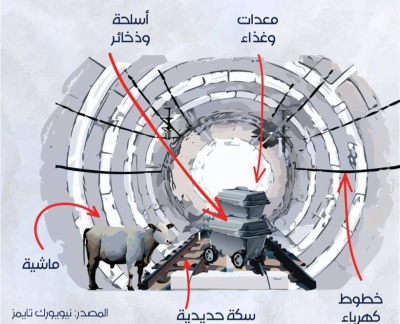Al-Marsad Newspaper: The New York Times revealed what the Gaza tunnels look like from the inside, based on photos taken by journalists inside the corridors, testimony from researchers studying the tunnels and details published by Israeli forces when they invaded Gaza in 2014, noting that the tunnels include an entrance that extends 19 meters underground and a ventilation opening.
He explained that there are tactical tunnels used as shelters against attacks, rooms for planning and detention of kidnappers, and ammunition depots.
He added: “It includes power lines, reinforced concrete, projectiles and ammunition.”
The newspaper reported that smuggling tunnels have been documented in the Rafah area, where they are used to transport all kinds of goods from Egypt to Gaza.
He continued, according to the testimonies of two workers, there are many tunnels that intersect each other at different depths.
He indicated that the expenditure includes corridors for the entry of equipment, food, livestock, weapons and ammunition, power lines and a railway.
The newspaper reported that the challenges of decommissioning the tunnels are as follows:
-Hidden entrances
The entrances to the tunnels are difficult to discover and the only way to do so is to send soldiers to search the area
– Alternative entrances
If Israeli forces manage to destroy a tunnel with air strikes or ground explosives, militants can quickly dig other entrances, ensuring the passage continues to function.
– Explosive traps
The entrances are often equipped with bombs or explosives with live wires
-Ambushes
